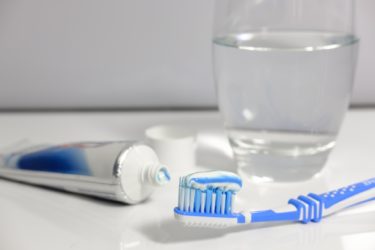Fluoridation of the water supply is an outdated, unnecessary, ineffective and unsafe form of the mass medication of the population. Or so says the Fluoride Action Network, a US-based pressure group acting to highlight the perceived risks of fluoride to the public.
The alleged dangers of fluoridated water is an ever-persistent thorn in the side of dentists. But what is water fluoridation exactly, what are the benefits and are the risks real?
Community water fluoridation entails controlling the amount of fluoride in the public water supply to around 1 part per million. At this level, the fluoride helps protect teeth against decay, while providing few side effects.
On the face of it, the case for fluoridation appears straightforward. A little bit of fluoride means a lot less decay. Look a little deeper, and things become much more complicated.

The evidence of benefit is clear. The most recent Cochrane review found that water fluoridation is effective at significantly reducing levels of tooth decay among children. Critics will complain that much of the evidence is old, flawed and potentially out of date. One should note that the evidence of a similar benefit of fluoridation for adults is limited and less conclusive. But a 35% reduction in decayed, missing and filled baby teeth, and a 26% reduction in the same measurement in the adult teeth of children means an enormous decrease in the potential pain and anxiety suffered by children and their families and huge cost saving to healthcare providers.
There are side effects of fluoridation. The most notable one is the risk of brown-white mottling that comes with fluorosis; an overexposure to fluoride. This unappealing cosmetic downside varies in severity, but limiting the level of fluoride in water to 0.7ppm reduces this risk without any significant effect on the decay prevention effect.
The ethical arguments for and against water fluoridation are more complex. Often, when thinking about the ethics of healthcare, it’s useful to use the four principles of bioethics:
- Autonomy – the patients’ right to choose what happens to them and their body.
- Beneficence – the treatment provided must be for the good of the patient
- Non-maleficence – the treatment must not harm the patient
- Justice – concerning equality in treatment distribution and outcomes
Rising in popularity in the 1970s, these four principles were initially supposed to be given equal weight when making ethical decisions, but it’s never really been that way.
Until recently, the prime driving force for healthcare was to provide a benefit to the patient. The healthcare professional would decide on a course of action, and the patient would play a minimal role in this decision or the subsequent treatment. In some instances, a cancer diagnosis, for example, the patient may even not have been informed of their diagnosis or likely outcome.
More recently, patient autonomy has risen in importance, and we now correctly recognise that patients have much more right to be involved in their healthcare decisions. We have moved on from the ‘doctor knows best’ situation of the 20th Century into a ‘co-diagnosis’ era.
One of the main ethical issues with water fluoridation is that it harks back to a time where this more paternalistic approach to healthcare was the norm.
With mass water fluoridation that right to choose is lost. Although the benefits for a section of the population are clear, people have a right to choose what interventions themselves and their children receive. And people are well within their rights to make what healthcare practitioners may consider to be a wrong decision.

It’s because of this ethical ambiguity that until recently I wasn’t a big fan of water fluoridation. A couple of things have changed my mind. Firstly, I moved from fluoridated Lincoln to non-fluoridated Suffolk. In Lincoln, even though I was working in a relatively socially deprived area of the country, it was rare for me to see children with decay. The move to Suffolk has changed this. The rate of decay in children, particularly those from a similar social background to those I would have seen in Lincoln, is much higher. The people aren’t different. The social circumstances are pretty much the same. The only thing that’s really changed is the water.
The second reason for my change of heart comes from a conversation I had with the head of a local social enterprise who provide community dental services, that is dentistry to those who usually have difficulty accessing services. Their patients include patients with special needs, prisoners, and victims of domestic abuse, for example.
Sometimes the only dental care homeless people will have access to is from fluoridated water
One comment was particularly telling: “Sometimes the only dental care homeless people will have access to is from fluoridated water.” This one comment brought the social justice element of fluoridation to the forefront of my mind. Those who have the least access to dental care are more likely to benefit, and this isn’t just the homeless.
Fluoridation is most likely to benefit those young people who are most likely to develop decay. These are likely to be from a more socially deprived background, who are less likely to be able to afford toothbrushes and toothpaste. For me, the reduction in personal autonomy is a worthwhile trade-off to advantage those who are in most need of assistance. The act of social justice is acceptable at the loss of a little liberty. It’s probably no coincidence that, although run by a British ex-pat, the Fluoride Action Network is an American group, where attitudes to liberty often go hand in hand with an individualistic philosophy. The community effect of fluoridation is unlikely to sit well with many of this mindset.
Water fluoridation isn’t a magic bullet to end dental decay in children. Ideally, a multitude of interventions should be provided, such as giving lessons on effective oral hygiene for young people in schools or providing families with young children free toothbrushes and toothpaste, along with dietary advice. Fluoridation does, however, offer a cost-effective, simple intervention with minimal drawbacks to the rest of the community.


